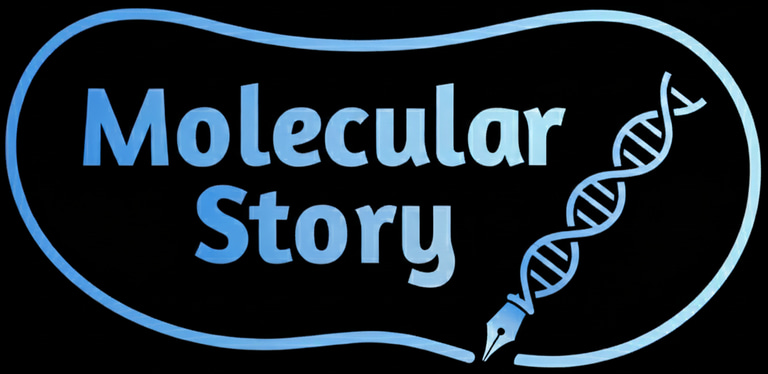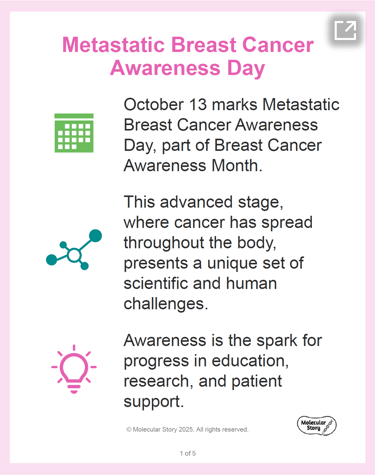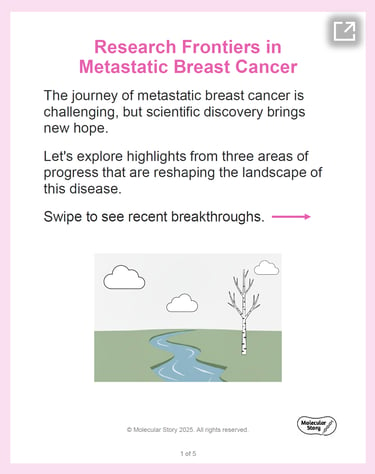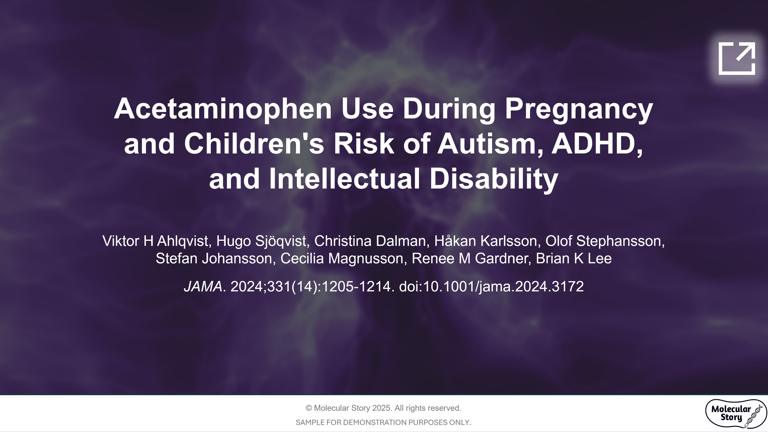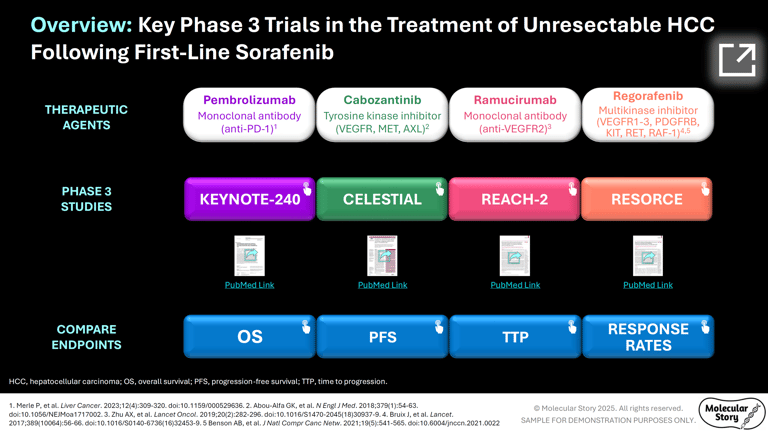
Sample Projects
Our capabilities on display
At Molecular Story, we design medical communications resources that offer both clarity and an intuitive user experience. Our materials are structured to make complex information understandable and easy to navigate. Explore our work below to see how we put these principles into practice.
Note: Sample materials have been created solely for demonstration purposes. They are not actual client projects, nor do they imply any professional association with the companies, brands, or products featured.
Summary of a Research Study on Cancer-Related Muscle Wasting (Cachexia)
This slide deck summarizes recent research on cancer cachexia for an audience of life sciences professionals. It focuses on the study’s core findings, including the discovery of distinct molecular subtypes, the role of hyper-inflammation, the function of non-coding RNAs as master regulators, and the multisystem nature of cachexia. By distilling the article’s complex gene expression data into actionable insights, the presentation connects foundational research to emerging therapeutic strategies. This work exemplifies scientific storytelling that helps researchers and clinicians navigate new paradigms in cachexia biology.
Social Media Content for Medical Communications
Part 1: Metastatic Breast Cancer Awareness
This slide deck was designed for a general/patient audience as part of a social media campaign for Metastatic Breast Cancer Awareness Day on October 13. It distills key disease information, including Canadian statistics and the meaning of the METAvivor ribbon, into a visually engaging and easily understood format. This work demonstrates the creation of accessible and impactful content for public and patient education.
Part 2: Advances in Metastatic Breast Cancer Research
This slide deck was developed for professionals in the life sciences, translating complex findings from primary literature into a succinct summary of research breakthroughs. It synthesizes topics such as metastatic relapse, drug resistance, and innovations in real-time monitoring using ctDNA and machine learning. By doing so, it enables professionals to quickly grasp the implications of recent research advances. This work highlights the crafting of a compelling scientific narrative from technical data.
Acetaminophen Use During Pregnancy Risk Analysis Slide Deck
This presentation summarizes a 2024 JAMA study by Ahlqvist et al. on the link between acetaminophen use during pregnancy and neurodevelopmental outcomes in children. Drawing on data from 2.5 million Swedish children, the analysis applies sibling control methodology to demonstrate that familial confounding, rather than a causal drug effect, accounts for previously reported associations.
The slides translate the study’s complex statistical findings into clear clinical guidance, reinforcing the safety of acetaminophen as a first-line analgesic for pregnant patients.
uHCC Second-Line Treatment Landscape Comparison Guide
This interactive guide provides a detailed overview of second-line systemic therapies for unresectable hepatocellular carcinoma (uHCC) in patients who have progressed on first-line sorafenib. It summarizes and directly compares efficacy and safety data from four key Phase 3 trials.
Designed for easy navigation, this resource allows for a streamlined review of study designs, patient populations, and side-by-side endpoint comparisons. The guide serves as a tool for medical affairs professionals or clinicians to evaluate the evidence base for key therapeutic options in this setting.
For full functionality, please download the PDF and view on a desktop/laptop using a PDF reader in single-page mode.
Contact us to view additional work samples.
